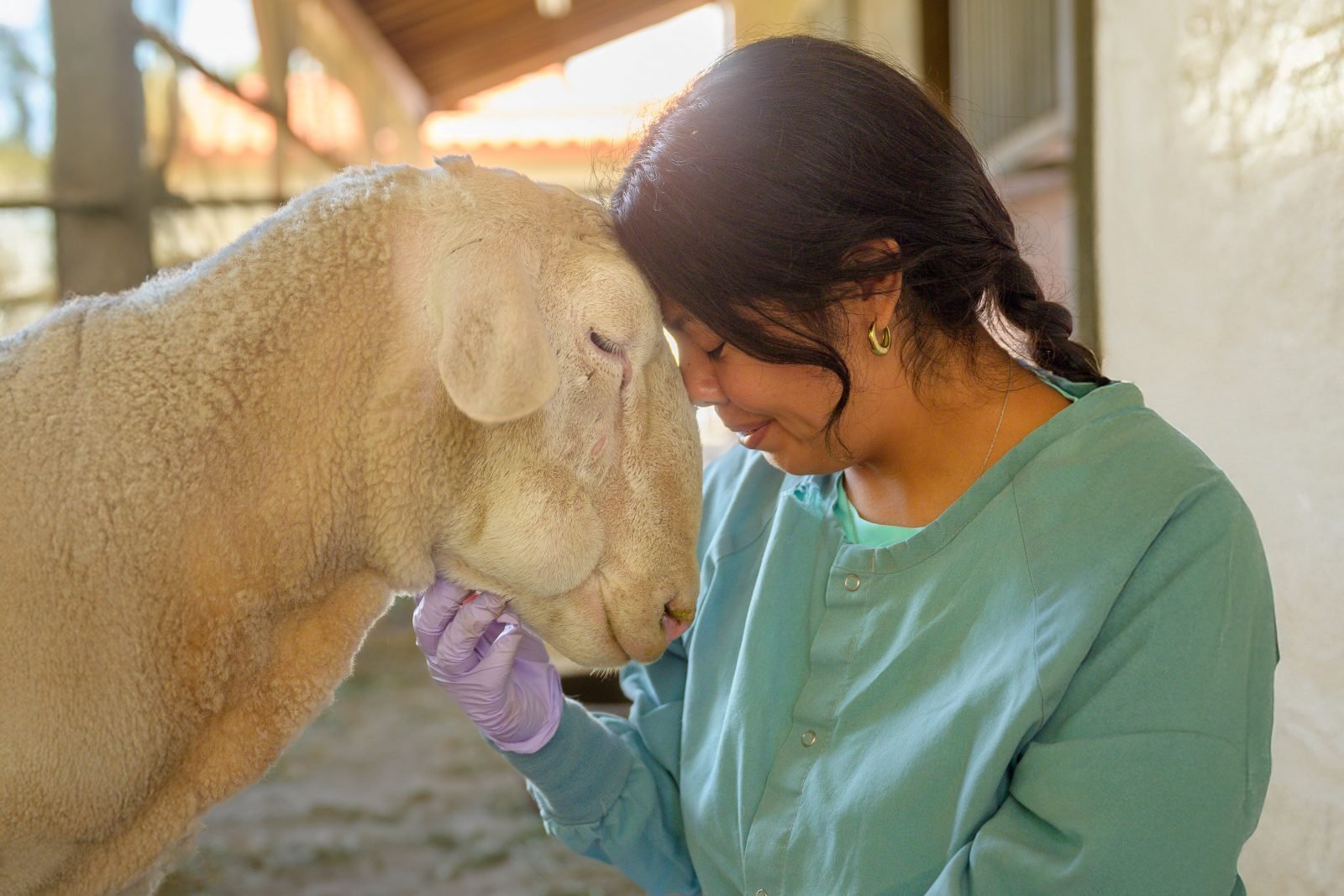They were horrified to discover dozens of sick, injured and abused animals, but the agency did not have the facility to provide shelter for them. Officers were faced with having to euthanize the animals until Farm Sanctuary responded and committed to providing transport and emergency sanctuary for the 16 victims of this horrible cruelty who were not offered local placement in San Diego.
Housed in filthy conditions on concrete floors, the animals were surrounded by “hazardous waste…including old shotgun casings, car parts, wires and cables, various yard tools, and other miscellaneous items,” according to Daniel H. Grove, D.V.M., the attending veterinarian brought in by Animal Control to examine the animals.
Dr. Grove encountered calves, steers, pigs, goats, and kids suffering from upper respiratory infections and pneumonia, parasites, lesions, profuse diarrhea, blindness, significant lameness, and necrotic and infected bones. Some animals, disoriented and unable to see, were walking in circles; still others were unable to walk at all. Due to extensive, debilitating ailments, numerous animals were euthanized immediately.
Deprived of adequate water and confined on concrete, each pig was sore and suffering from varying degrees of lameness, and one pig was euthanized due to severe lameness and muscle atrophy. A steer suffering from similar extensive injuries was also euthanized. The most far-reaching suffering, however, involved eight baby calves confined to two concrete pens.
“In the first pen, there were six calves, all of which were breathing heavy, had moist, productive coughs, and profuse watery diarrhea. One of the calves was non-responsive and was euthanized…In the second pen there were only two calves. One was blind, circling to one direction and somewhat unresponsive. The diagnosis is still pending from the necropsy, but this animal was euthanized. The second calf in this pen had its hind leg bandaged and did not appear very lame. The bandage was removed, and the lateral claw of the hoof was missing. The joint surface was what the animal was walking on. The bone was necrotic and infected.” Shortly afterwards, this calf also had to be euthanized.
A horse, housed with cows in a feedlot, was suffering from an untreated wound on the right hock. The dirty and infected laceration was cleaned and bandaged, and antibiotics were administered to clear up the existing infection and prevent further infection.
All the goats were malnourished and suffering from severe respiratory infections. Some had mucous running from their noses, and one had a distended belly, according to Tammie Sandon, a Farm Sanctuary member who fostered eight goats. Another goat, who was blinded from an untreated case of pink eye, was adopted by Sandon.
These animals were left to suffer and die under the most cruel conditions, so the owner could sell the animals for meat if they survived. When Farm Sanctuary received the call about these suffering animals, we quickly began preparing temporary care areas at our California Shelter and arranging to transport surviving animals to safety.
On October 15, 2003, we transported the remaining animals, including seven goats, eight calves and one steer to our California Shelter. The animals arrived after a 12-hour journey from the San Diego area, and shelter caregivers and volunteers worked until midnight to unload each animal and administer medications and treatments. After eight long hours of veterinary assessments and treatments, the animals settled into clean, straw-filled barns with fresh water and nourishing food.
Several of the animals required immediate and critical medical care. One of the calves had a ruptured eye and several had lesions from untreated pink eye infections. Another calf was unable to stand on his own for the first 36 hours. One goat had an orange-sized abscess on his cheek and ring worm on his ear, and another goat lost an eye entirely. All of the rescued animals were suffering from respiratory infections, severe parasites and other ailments. Sadly, one of the seven goats, who we named Mayor, passed away not long after arriving at our California Shelter.
The surviving calves and goats were lovingly named by shelter staff and volunteers after some time spent getting to know them. The bashful and sweet young steer was named Tuba. (Sadly, Tuba passed away in 2005, and he is sorely missed.) The two females are Cha Cha and Jitterbug, both of whom are very spirited, feisty and playful. The six males are Hopi, Fritz, Bongo, Moe, Alto, and Moo. The six surviving goats are all males, and are named Rufus, Chili, Geo, Pugsly, Mac, and Hombre. Caregivers, interns, and shelter staff spent many hours encouraging the lucky survivors to trust humans again. They patiently allowed the animals to approach at their own pace and get close enough to give timid kisses. Although many of the animals remained “hand shy” for some time – no doubt because they had endured so much abuse by human hands in the past – with each passing week, they developed more and more faith in their caretakers. These days they are very affectionate, indeed, and are enjoying their new life of freedom and comfort.






